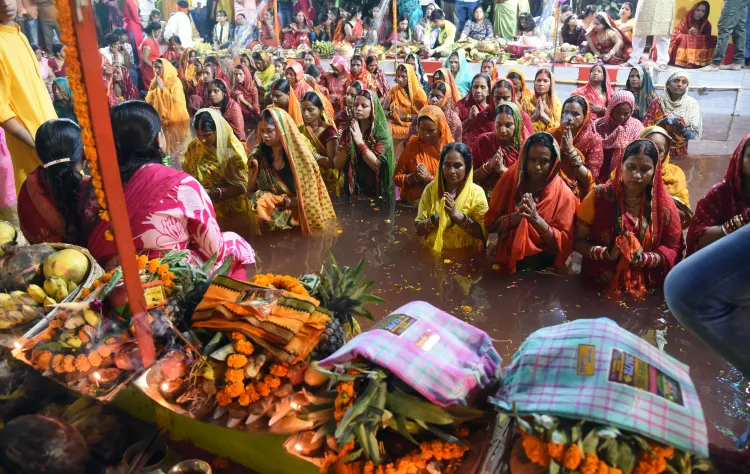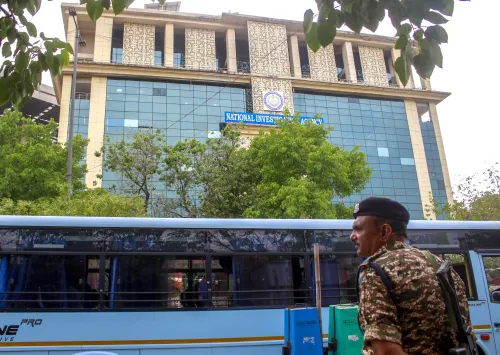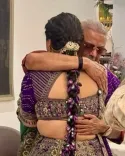Is the Centre Nominating Chhath Festival for UNESCO Heritage Status?

Synopsis
Key Takeaways
- Chhath Mahaparva is a festival of deep cultural significance in India.
- The Union Government is pursuing UNESCO recognition to honor the festival's traditions.
- It embodies values of discipline, community, and faith.
- Rituals emphasize purification and gratitude towards nature.
- Chhath songs play a vital role in preserving its rich heritage.
Patna, Aug 12 (NationPress) The Union Government has directed the Sangeet Natak Akademi (SNA) to review and advance the nomination of Chhath Mahaparva for entry into UNESCO's representative list of Intangible Cultural Heritage (ICH) of humanity.
A correspondence from Ankur Verma, Under Secretary to the Government of India, was dispatched to the SNA following a proposal submitted by Sandeep Kumar Dubey, chairman of the Chhathi Maiya Foundation, on July 7.
Chhath Mahaparva, which has profound roots in Bihar and eastern Uttar Pradesh, is commemorated with deep reverence by communities from these areas globally.
The SNA, serving as the key agency, has been tasked with taking the necessary steps regarding this proposal.
This deeply spiritual Chhath Puja, embedded in ancient folk traditions, occurs biannually and is celebrated throughout Bihar, Jharkhand, eastern Uttar Pradesh, and the Mithila region of Nepal.
The festival pays tribute to Surya (the Sun God) and Chhathi Maiya, observed over a four-day period filled with intricate rituals that embody purification, gratitude, and steadfast devotion.
The commencement day, Nahai-Khai, starts with 'chhath vratis' (devotees) immersing themselves in rivers or ponds for ritual cleansing.
They then adorn themselves in fresh garments and prepare a simple, satvik meal consisting of pumpkin, gram pulse, and rice, seasoned purely with rock salt.
This offering, presented as prasad, signifies purity, discipline, and a spiritual renewal.
Subsequently, 'chhath vratis' pledge to observe a fast for the following three days, maintaining strict hygiene, steering clear of forbidden foods, and dedicating themselves entirely to the veneration of the Sun God.
The festival is renowned for its rigorous 36-hour waterless fast, which devotees endure with remarkable resilience, attributing their endurance to faith.
The rituals are rich in tradition—from cooking on a mango wood-fired stove to avoiding non-satvik ingredients like onions, garlic, and animal products.
Colors of yellow and red dominate the attire, symbolizing purity and devotion.
Heartfelt Chhath songs in homage to Chhathi Maiya resonate throughout homes and ghats, preserving the festival's vibrant folk heritage.
More than a mere religious observance, Chhath Puja is a celebration of discipline, community, and profound cultural continuity—a testimony to the lasting connection between faith and tradition.









